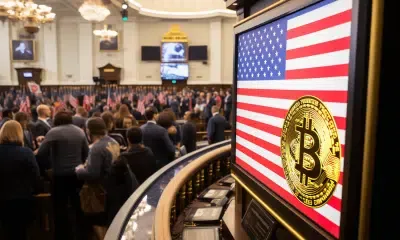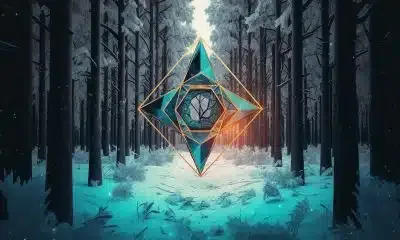
Render Network ($RENDER) sits where blockchain, AI, and distributed computing meet. With AI and detailed graphics pushing GPU needs through the roof, Render offers a way around expensive central cloud providers using a distributed network. But is this Decentralized Physical Infrastructure Network (DePIN) really the key to affordable high-power computing, or just buzz?
Render Network operates a decentralized marketplace. People needing serious graphics processing (GPU) power, called “Creators,” connect with others who have GPUs sitting idle – the “Node Operators.” Jules Urbach, who also started cloud graphics firm OTOY, Inc., created Render. It uses blockchain to manage a worldwide network for handling tough graphics jobs, visual effects (VFX), and increasingly, tasks for artificial intelligence (AI).
Creators send in their work, often through software already linked to Render. Node Operators then use their own computers, mainly the GPUs, to do the processing. The goal is a cheaper, faster way than the old methods.
Working on Render
Getting work done on Render involves a few steps. First, Creators send their projects, like 3D models or AI datasets. The network figures out what’s needed and sends pieces of the job to fitting Node Operators, considering things like their GPU strength, track record, and the price level chosen.
To make sure the work gets done right before payment, Render uses a verification process sometimes called Proof-of-Render. This isn’t about block consensus; it’s about checking the output matches the Creator’s request. Methods might include hashing files, watermarking results until payment clears, or even the Creator looking it over. Finishing jobs well builds a Node Operator’s reputation. Blockchain technology (originally Ethereum, now shifting to Solana) underpins the whole thing, handling payments securely with the RENDER token. Smart contracts often manage the money, holding it until the job checks out.
The RENDER token (first RNDR on Ethereum, now on Solana) is vital to how the network runs. Creators pay for processing jobs using RENDER, with costs varying based on things like speed or operator reliability. Node Operators get paid in RENDER for lending out their GPU power and finishing tasks correctly. Operators can also “stake” RENDER tokens, which can boost their reputation and help them get better or more frequent jobs.
If you hold RENDER, you can have a say in the network’s future by suggesting and voting on Render Network Proposals (RNPs). The total amount of RENDER is limited (around 532-536 million). After the community agreed, the network started using a “Burn-Mint Equilibrium” (BME) model on Solana. This means RENDER spent by creators gets destroyed (“burned”), while new RENDER is created (“minted”) to pay operators, trying to keep the token supply and demand balanced.
Why is Render getting so much attention?
Several trends feed into it. Training and running AI requires huge amounts of GPU power, opening a massive door for Render. The network is actively working to handle these AI tasks, adding tools like Stable Diffusion and Flux and teaming up with AI companies. Making realistic graphics for movies, video games, VR/AR experiences, and virtual worlds also demands intense rendering power, which is exactly what Render was first built for.
By tapping into unused GPUs worldwide, Render tries to offer computing power cheaper than big players like AWS or Google Cloud, making high-end processing reachable for independent artists and smaller companies.
Render Network has been busy connecting with tech and creative fields. It works with over 20 common Digital Content Creation (DCC) programs. Important links include tools or direct use with Cinema 4D (including Redshift), Blender (with Cycles integration underway), Houdini, and Unreal Engine, with plans for Arnold support too.
On the AI front, Render is working with Stability AI, OTOY, and Endeavor to help standardize AI processes and intellectual property rights. It’s also collaborating with Bittensor and Mode to get AI developers the compute power they need efficiently. The network has ties to NVIDIA, showing up at NVIDIA’s GTC conference and discussing use of new GPUs like Blackwell. Within the crypto world, Render is working closely with projects like io.net (which also gathers compute power) and linking up with services like Dropbox.
A non-profit group, the Render Network Foundation, now guides the main protocol and helps manage its decentralized decision-making. The community plays a big role through the RNP system, suggesting and deciding on important changes to the network. You can find active discussions on places like Discord and Telegram.
Back in 2023, the Render community voted (via RNP-002) to move the network’s base operations from Ethereum to Solana. The main reasons were Solana’s quicker transaction times, much lower fees, and better ability to handle growth, which were seen as essential for Render’s plans. A tool was provided for users to swap their old Ethereum-based RNDR tokens for the new RENDER tokens on Solana, one-for-one. There were even some perks offered to get people to switch early.
Render ($RENDER) has definitely caught the eye of many, seen as a significant project in the DePIN (Decentralized Physical Infrastructure Network) and AI crypto spaces. Its potential comes from solving a real problem in fast-growing industries. If it successfully moves deeper into AI and keeps attracting users, it could grow substantially. However, like any crypto asset, RENDER’s price can swing wildly. It faces tough competition from giant cloud companies and other decentralized projects (like Akash or io.net). Rules around decentralized platforms are still unclear.
Big hurdles include technical issues, keeping the network stable (including any potential problems linked to Solana), and getting enough people to actually use it consistently. Some observers also point to worries about how much active development is happening or the potential for the token supply to increase (though the BME system aims to control this).
Besides the market ups and downs, Render faces practical roadblocks. Sending huge project files across a spread-out network can cause delays (latency). Making sure the final renders are accurate when done by unknown operators around the world depends heavily on solid verification systems like Proof-of-Render. Plus, getting started and using blockchain systems can still feel complicated for creators and node operators who aren’t already familiar with crypto.
Render Network is at an important point. Its core idea tackles a real, increasing demand for GPU power. Moving into AI, connecting with major creative tools, and switching to Solana are key steps aimed at future success. Whether it thrives hinges on making it all work smoothly – growing the network reliably, building strong communities of both users and GPU providers, outmaneuvering competitors, and proving that its decentralized approach makes economic sense against tough market pressures and obstacles.




